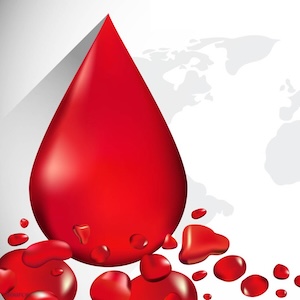Proceedings of the 12th International Conference on Thrombosis and Hemostasis Issues in Cancer, 2024
Vol. 3 No. s1 (2024)
Factor XI inhibitors: a new option for the prevention and treatment of cancer-associated thrombosis

Publisher's note
All claims expressed in this article are solely those of the authors and do not necessarily represent those of their affiliated organizations, or those of the publisher, the editors and the reviewers. Any product that may be evaluated in this article or claim that may be made by its manufacturer is not guaranteed or endorsed by the publisher.
All claims expressed in this article are solely those of the authors and do not necessarily represent those of their affiliated organizations, or those of the publisher, the editors and the reviewers. Any product that may be evaluated in this article or claim that may be made by its manufacturer is not guaranteed or endorsed by the publisher.
Received: 17 January 2024
Accepted: 12 March 2024
Accepted: 12 March 2024
1218
Views
498
Downloads
Similar Articles
- Alice Lipari, Esmeralda Capristo, Antonietta Ferretti, Erica De Candia, Anticoagulation in obese patients: challenges and strategies , Bleeding, Thrombosis and Vascular Biology: Vol. 4 No. 3 (2025)
- Maria Barca-Hernando, Victor Garcia-Garcia, Luis Jara-Palomares, Location of metastasis and complications in patients with venous thromboembolism and cancer: a systematic review , Bleeding, Thrombosis and Vascular Biology: Vol. 3 No. s1 (2024)
- Stefania Cavazza, Gualtiero Palareti*, Still unmet problems with low molecular weight heparin prophylaxis of venous thromboembolism. An Italian survey , Bleeding, Thrombosis and Vascular Biology: Vol. 4 No. 3 (2025)
- Gary E. Raskob, Risk of recurrent venous thromboembolism in cancer patients after discontinuation of anticoagulant therapy , Bleeding, Thrombosis and Vascular Biology: Vol. 3 No. s1 (2024)
- Agnes Y.Y. Lee, Venous thromboembolism treatment in patients with cancer: reflections on an evolving landscape , Bleeding, Thrombosis and Vascular Biology: Vol. 3 No. s1 (2024)
- PO81 | Direct oral anticoagulants in atypical site vein thrombosis: a single centre experience focused on cancer patients , Bleeding, Thrombosis and Vascular Biology: Vol. 4 No. s1 (2025)
- PO43 | Extended treatment with reduced dose of direct oral anticoagulants in patients with venous thromboembolism: a retrospective study , Bleeding, Thrombosis and Vascular Biology: Vol. 4 No. s1 (2025)
- CO05 | Long-term management of upper extremity catheter-related thrombosis in female patients with cancer: a retrospective cohort study , Bleeding, Thrombosis and Vascular Biology: Vol. 4 No. s1 (2025)
- Anna Maria Gori, Eleonora Camilleri, Alessia Bertelli, Angela Rogolino, Francesca Cesari, Elena Lotti, Tommaso Capobianco, Walther Iannotti, Betti Giusti , Rossella Marcucci, Pleiotropic effects of anti-thrombotic therapies: have direct oral anticoagulants any anti-inflammatory effect? , Bleeding, Thrombosis and Vascular Biology: Vol. 1 No. 3 (2022)
- CO52 | The impact of KRAS mutations on the risk of recurrent venous thromboembolism in patients with cancer-associated thrombosis and gastrointestinal neoplasms , Bleeding, Thrombosis and Vascular Biology: Vol. 4 No. s1 (2025)
1-10 of 186
Next
You may also start an advanced similarity search for this article.










